Developer: Yager Entertainment | Released: 2012 | Genre: 3PS, Military
I’ve heard a lot of about this game since the game was released now more than a decade ago. About how the story was supposed to be extraordinary and really surprises you in the end. But I always imagined that it would be rock hard and for that reason I’ve always skipped it. Until now. And I’m happy to say that it’s quite playable on the easy difficulty level – even for a shooter klutz like me.
In fact, the gameplay is terrific. It’s one of the best cover shooters I’ve played.
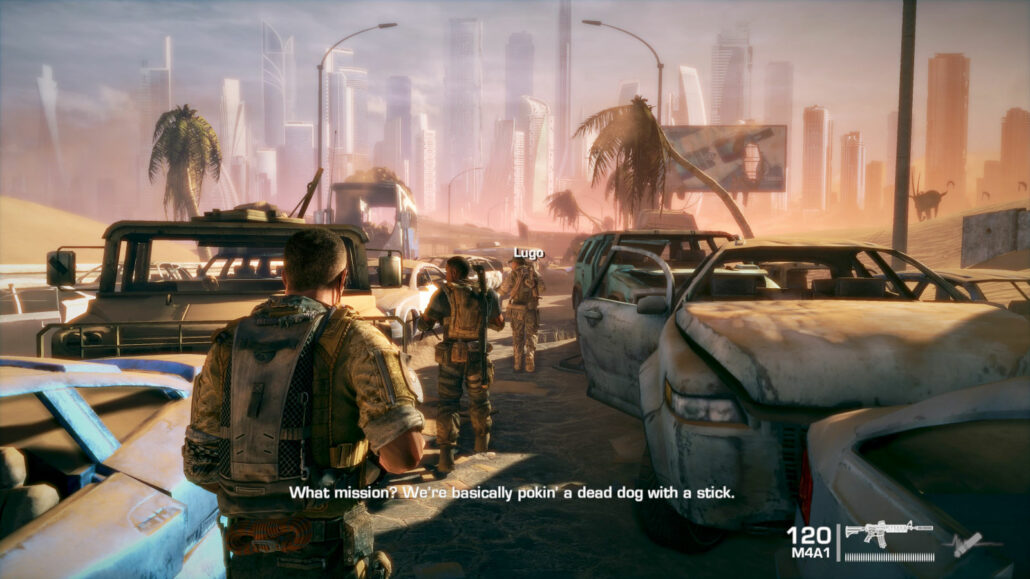
As captain Martin Walker, I was one of three military soldiers in a squad that I commanded, dropped in Dubai after a catastrophic sandstorm, looking for survivors and also a guy named John Konrad. Turns out there was a lot alive in the ruins of Dubai – but they were not survivors. They were hostiles. And so most of the game went through buildings, cellars, parking lots, sometimes bothered by sandstorms, sometimes using a zip line to enter the next skyscraper. It was all linear too, with ammo refills in the corners.
Even in 2023 I was satisfied with the graphics. The facial animations were excellent and the voiceovers even better. The sandstorms were very convincing when they blasted through the windows.
The gameplay itself felt good. The space bar was used for many things such as entering cover or dropping down. Aiming with right mouse button and then shooting felt perfect while in cover, and I could order a target to be taken down with the middle mouse button. That being said, I often couldn’t get that last thing working, but I rarely wanted to use it anyway. Most of the time they knew how to assist without.
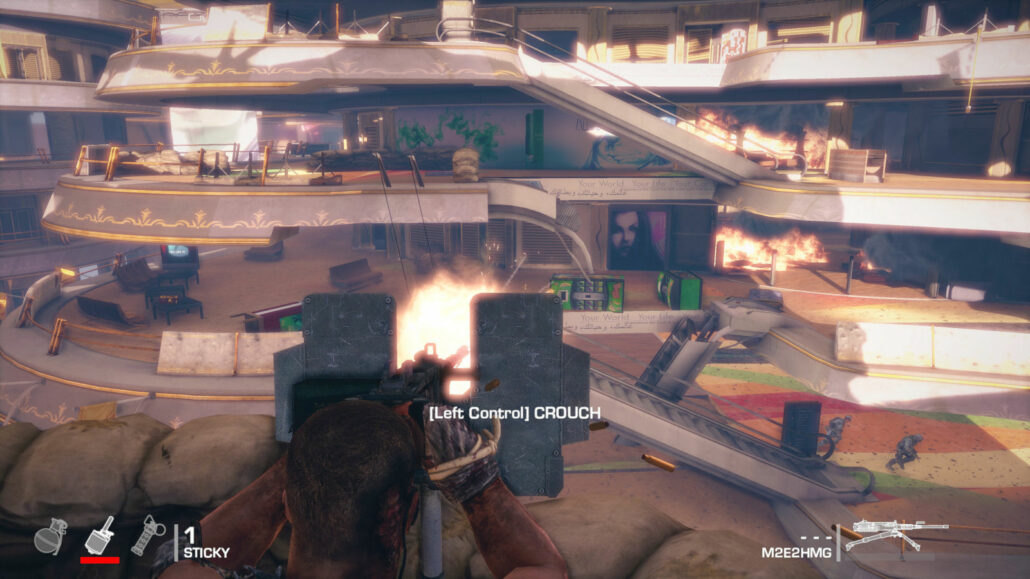
I also liked that you could flip a stationary turret around.
Not all hotkeys were excellent. I wish the space bar was also used for vaulting, but for some reason they used a different hotkey for this. It was also a bit weird that I had to hit the space bar while moving forwards to start running. But those are just minor niggles.
I must say the story took quite some time to get going in the interesting direction I had heard so much fuss about. In the first half of the game my team was just shooting bad guys like in a standard shooter, merely exchanging dialog about what to do next. But it did get quite interesting in the second half.
The developers started exposing me to several moral choices, forcing me to decide between a good or bad reaction to a quandary. I quickly learned that the way they had designed this was to make the bad choice so much easier than the good one. For example, at one point I was told to shoot one of two civilians tied up above us. If I refused to shoot the one I thought was the most guilty of a crime, we would probably have been gunned down ourselves. Maybe not exactly game over, but certainly more difficult.
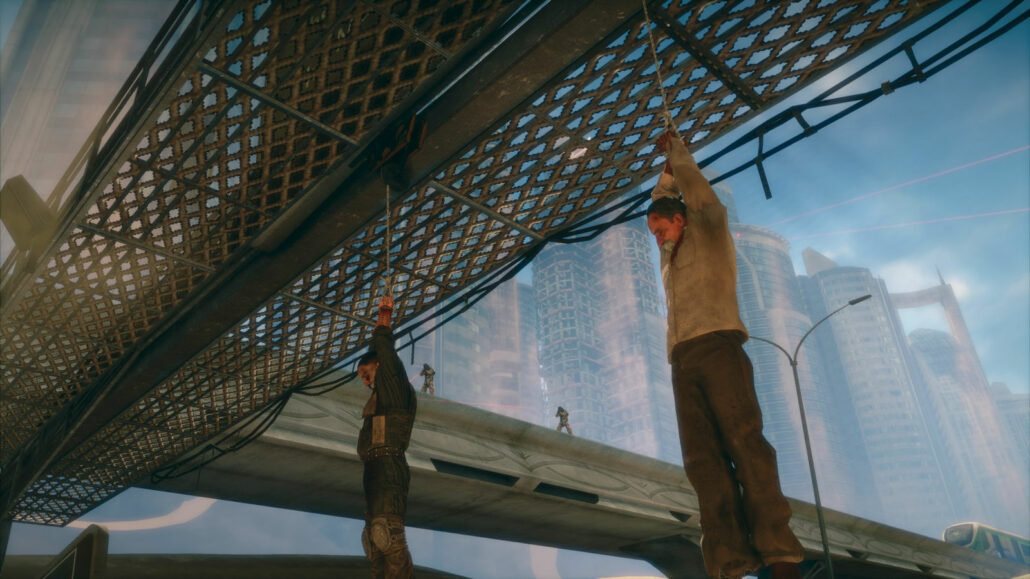
So I shot one of them.
All of the bad choices along the way made my team angrier. More depressed and disagreeing with captain Walker. Sometimes they outright questioned his motives, wondering what the hell they were doing? They were supposed to rescue people, not kill everyone!
The most egregious example of a really difficult choice was a place where we arrived at a balcony. An army of enemy soldiers were in front of us. I had two choices, suggested by each of my team mates – funny how there were two team mates for offering these choices, right? One was to kill the enemy soldiers the normal way, which we knew would be very difficult. The other was to use a mortar with a black and white screen for bombing the troops and tanks with white phosphorous. This was a very nasty type of bomb that could be compared to napalm. It might have been the easier choice, but definitely also the most evil by far.
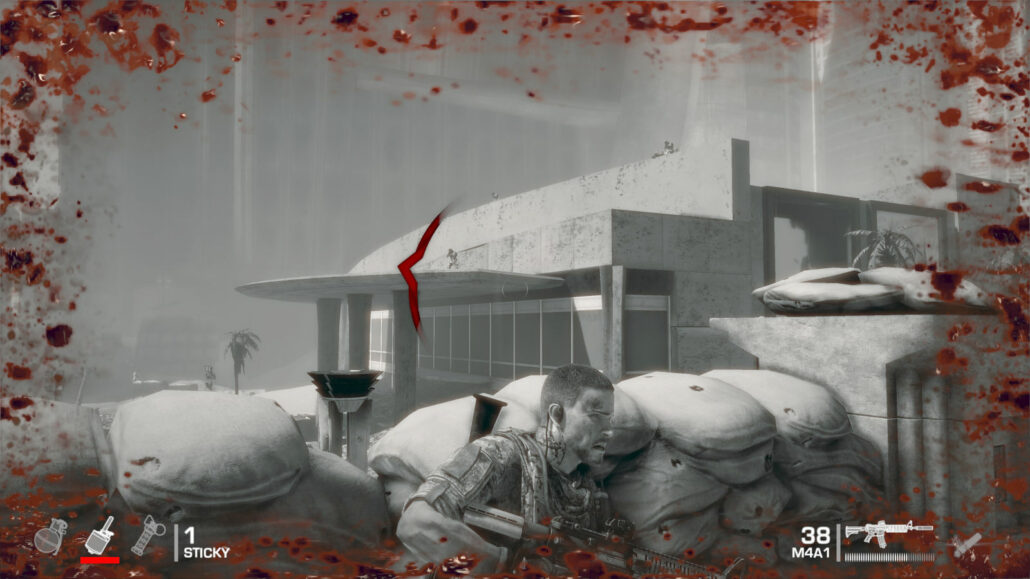
I tried doing it the right way first by shooting the enemy normally. Apart from the cornucopia of antsy soldiers running around on the ground below, several snipers arrived on the roof of a building to the right of us – and they were relentless. If I shot them all down, more snipers came to take their place. And then again. And again. And again. I think I killed almost a dozen waves of those snipers.
That’s when I realized that it was a setup. There never was much of a choice.
Using the mortar to drop bombs on the troops and tanks was so much easier, it literally felt like dropping the difficulty level down a notch or two. Afterwards, the cutscene showed that a large group of innocent civilians had also been hit by the white phosphorous. They all looked like roasted zombies. This really grabbed me by my emotional balls. My team mates were yelling at captain Walker, and I didn’t blame them. As the next section of the game started, it took a few minutes before I could muster tapping the movement keys again. I was really close to quitting the game altogether.
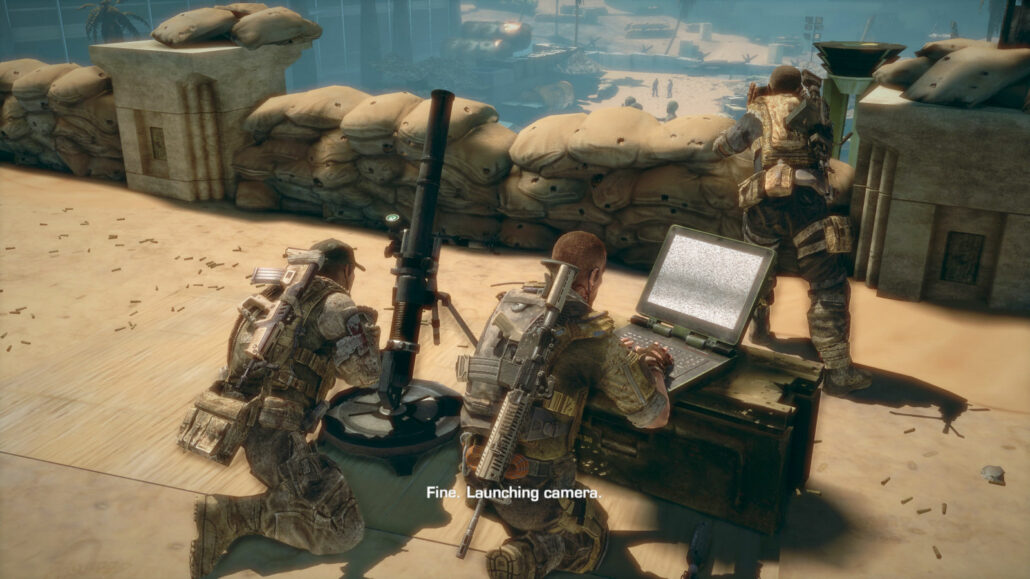
One of the things I found fascinating was the way captain Walker rationalized my choice in the dialog of the cutscene following it. Me and my video game avatar were always synchronized. Somehow, it reminded me a little of the choices originally not endorsed by the narrator in The Stanley Parable.
It was also the small details. After finishing a fight against a few enemy troops and my team was running through the battlefield, there were a few of the enemy soldiers that were not completely dead. They were in agony. I could shoot them as I passed by them to relieve them of their pain, but ammunition was scarce in this game. I often had to replace rifles to keep up.
So most of the time I just ignored them.
Towards the final chapters of the game, Walker starting hallucinating. There was even an unexpected boss fight against one of my own team mates. I finally found John Konrad, only to discover that things were not as I expected. Without spoiling too much, it made me feel even more of a villain than ever before. Clever writing indeed. I’m glad I finally got to experience this game first hand, even if it was quite upsetting.


